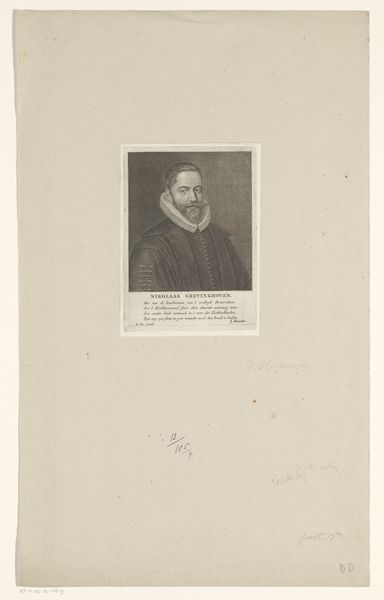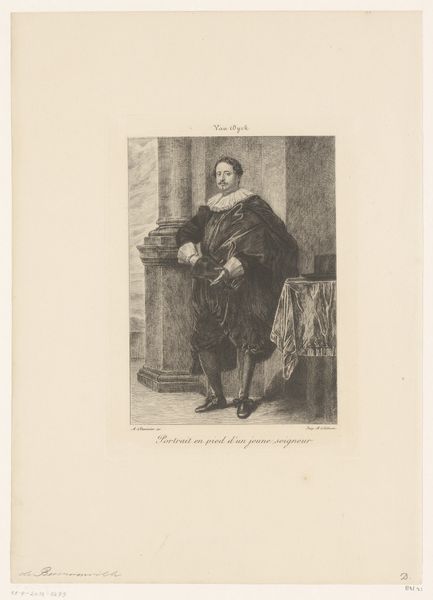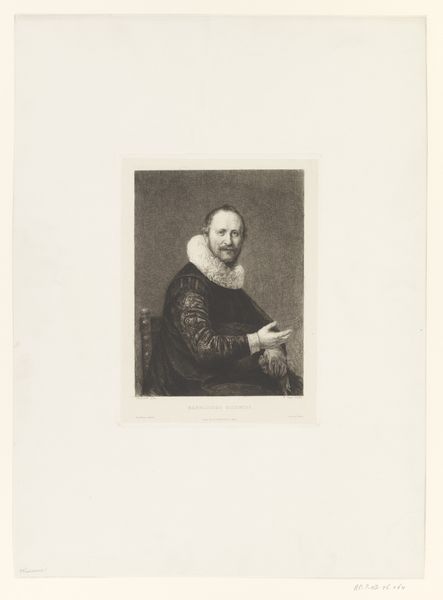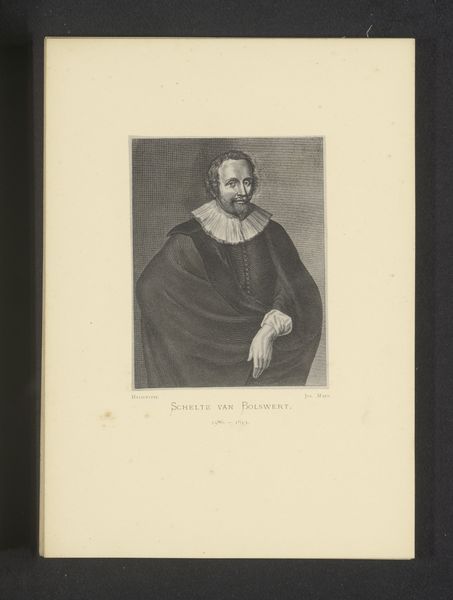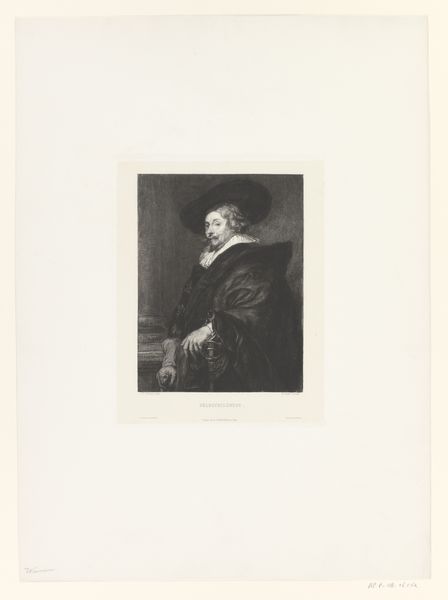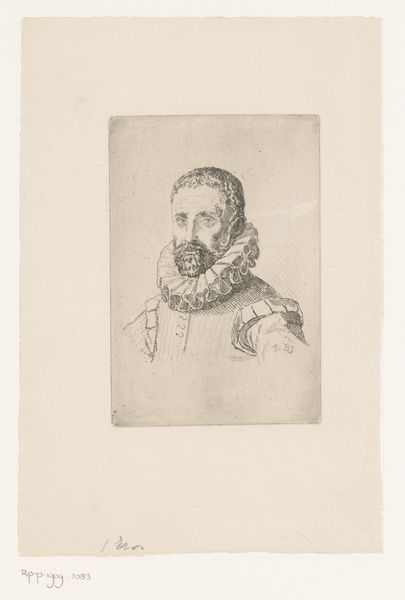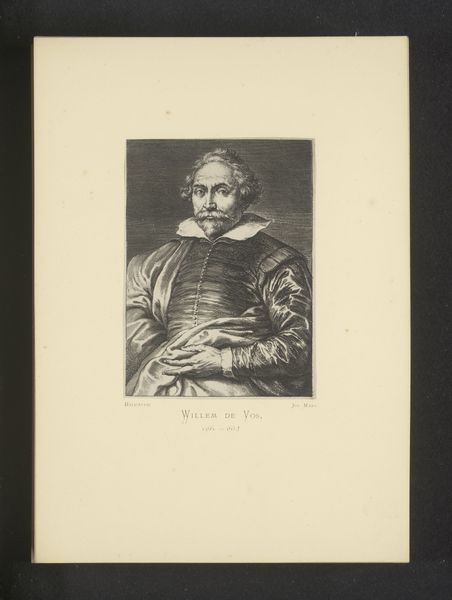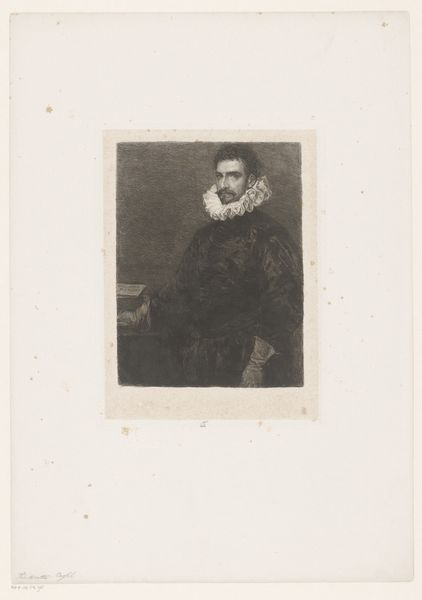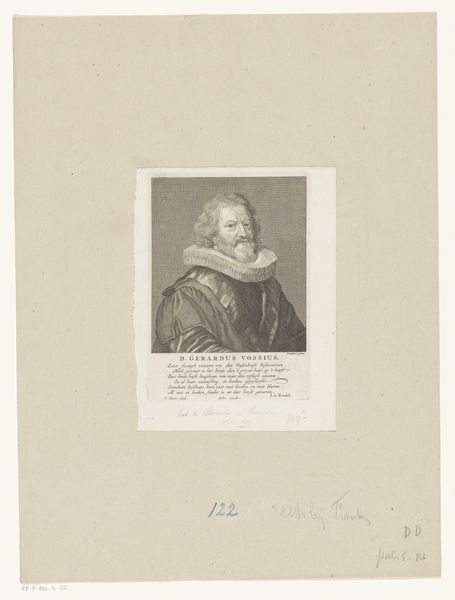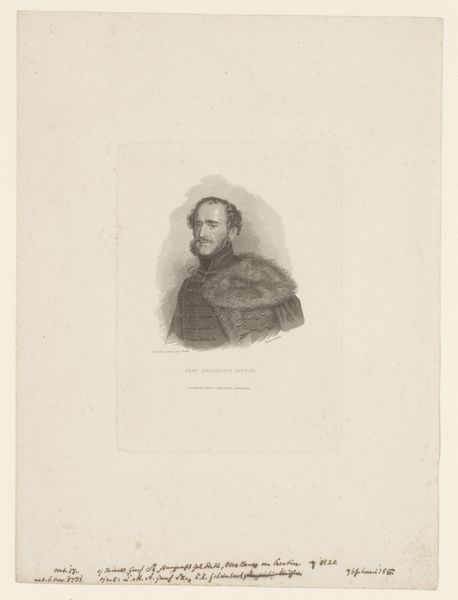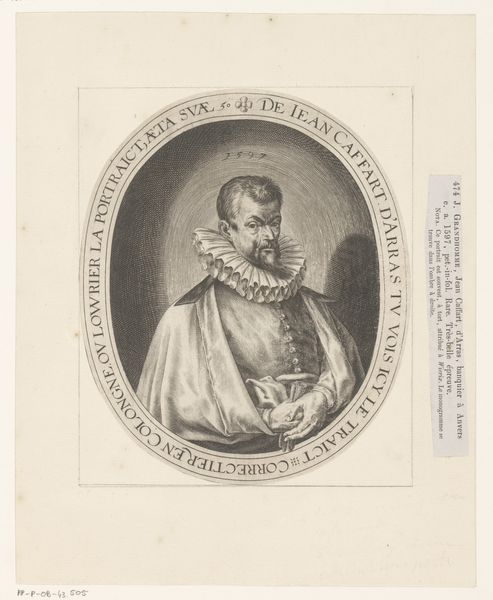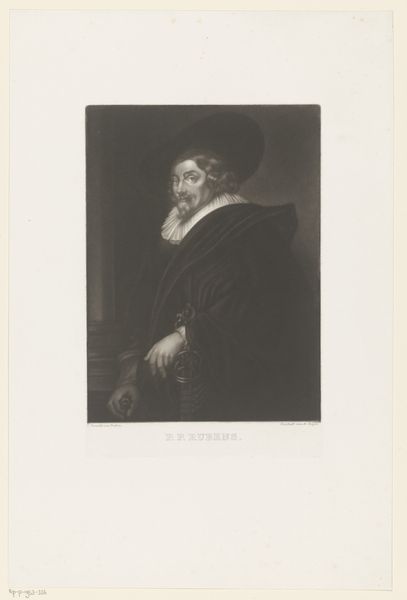
print, etching
#
portrait
#
pencil drawn
# print
#
etching
#
pencil drawing
#
genre-painting
#
realism
Dimensions: height 269 mm, width 202 mm
Copyright: Rijks Museum: Open Domain
Curator: Ah, here's William Unger's "Portret van Justus van Meerstraeten," dating somewhere between 1847 and 1889. It's an etching, a print, residing here at the Rijksmuseum. What's your initial impression? Editor: Stark, almost severe. The grey scale gives it such gravity. He’s framed against this dramatic, almost theatrical backdrop – and what’s that little sculpture to the side? It adds such a curious layer to the portrait, almost like a Greek chorus. Curator: That contrast you notice is intentional. Unger was deeply inspired by realism. The sculpture you're observing represents, and symbolizes, Van Meerstraeten's intellectual pursuits. Placing a bust alongside indicates classical education and learnedness, common in portraits of the era to convey prestige and social status. The ruffle collar amplifies the historical depth and presence. Editor: The composition really draws the eye. The play of light and shadow – particularly around the face – makes it almost three-dimensional. The ruffled collar nearly steals the show, yet the soft modelling of the face lends the man warmth, preventing him from becoming simply a figure of historical import. Curator: Indeed, Unger's skill in capturing light with such a detailed etching technique transforms it from just a representation to a narrative piece, subtly commenting on the subject's character. The etching beautifully renders textures and shades. Notice how even in monochrome, the image feels vibrant, like it could breathe! Editor: The stormy sky almost presages some conflict within Van Meerstraeten's soul, no? A quiet drama in black and white. Though, what stories does this image not reveal to us about Justus, as a symbol himself? Curator: It invites you to contemplate who Justus was beyond his profession, I imagine. Perhaps a life of quiet influence that these elements symbolise? Editor: Precisely! Unger captures him both as an individual and as an emblem. I imagine this symbol will linger in the mind of those who knew of Van Meerstraeten. Curator: So well said, perhaps Unger saw an equal in Meerstraeten? I think this work demonstrates a thoughtful engagement with portraying not just a face, but an enduring story. Editor: Yes. There’s an interesting conversation happening between the artwork, the subject, and us, so many years later.
Comments
No comments
Be the first to comment and join the conversation on the ultimate creative platform.
